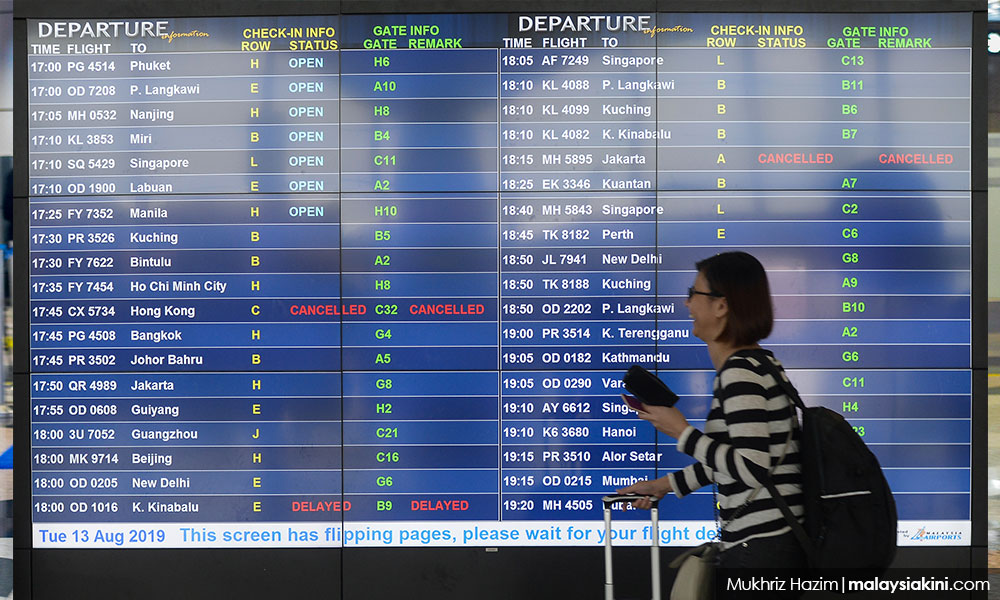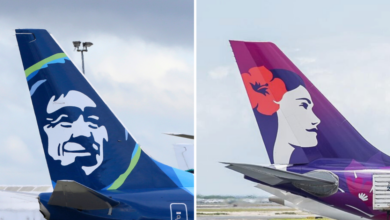
Airlines Betting on Direct Passenger Channels
Airline betting on bringing passengers into direct channels is a significant shift in the industry. This strategy involves airlines taking control of passenger bookings and interactions, moving away from intermediaries like travel agents and online travel agencies. Airlines are exploring various aspects of this transition, including building robust online booking platforms, personalized customer experiences, and strategic marketing campaigns to directly engage passengers.
This strategy promises to offer airlines greater control over their brand image and potentially significant cost savings.
The motivations behind this move are multifaceted, ranging from cost optimization to enhanced customer experience and greater brand control. Airlines are recognizing the potential for increased revenue and profitability by directly connecting with customers. However, this shift also presents challenges, such as the need for sophisticated technology, effective marketing, and a seamless transition for existing customers accustomed to indirect booking channels.
Understanding the Concept of Direct Channels
Airlines are increasingly focusing on direct channels for passenger acquisition. This shift reflects a broader trend towards customer-centric strategies and a desire to gain more control over the customer journey. Direct channels offer a unique opportunity to build stronger relationships with passengers, potentially leading to increased loyalty and revenue. This shift is driven by the realization that a more direct connection with customers can provide valuable insights and allow for more personalized experiences.Direct channels in the airline industry refer to any sales and service channels that an airline manages and controls itself.
This contrasts with indirect channels, which involve intermediaries like travel agents or online travel agencies (OTAs). A direct channel could include an airline’s website, mobile app, call centers, or in-person check-in desks. Essentially, any interaction that the airline directly handles is part of its direct channel strategy.
Direct Channels vs. Indirect Channels
Direct channels allow airlines to have complete control over pricing, marketing, and the overall passenger experience. They can tailor offerings and promotions directly to the customer without intermediaries influencing the process. Indirect channels, on the other hand, involve a third party, like a travel agent or an OTA, which typically charges a commission for facilitating the booking.
Benefits of Direct Channels
- Improved Customer Data Collection: Direct channels allow airlines to gather comprehensive data on passenger preferences, travel patterns, and booking history. This detailed information enables airlines to offer more personalized services and targeted promotions, improving customer satisfaction and potentially boosting loyalty programs.
- Direct Control Over Pricing and Promotions: Airlines can implement dynamic pricing strategies and tailor promotional offers directly to customers, without intermediaries dictating pricing models. This gives airlines the flexibility to react to market trends and customer demand more efficiently.
- Enhanced Customer Relationship Management (CRM): Direct channels provide a direct line of communication with customers, enabling airlines to build stronger relationships and gather feedback. This direct interaction is key for understanding customer needs and expectations.
- Increased Revenue Potential: By streamlining the booking process and eliminating commissions paid to intermediaries, airlines can potentially increase their revenue. This is especially true for airlines with strong brand loyalty and customer engagement.
Drawbacks of Direct Channels
- Higher Initial Investment: Implementing a robust direct sales infrastructure, including websites, apps, and customer service channels, requires substantial initial investment.
- Marketing Challenges: Reaching a wide audience through direct channels can be challenging, particularly in comparison to the extensive reach of established OTAs. Effective marketing strategies are crucial to generate sufficient customer traffic.
- Potential for Customer Service Issues: A large volume of customer interactions through direct channels can lead to potential customer service challenges, especially if not properly managed.
Comparison of Direct and Indirect Channels
| Feature | Direct Channels | Indirect Channels |
|---|---|---|
| Pricing Control | High | Low |
| Customer Data Collection | High | Limited |
| Marketing Control | High | Limited |
| Customer Relationship Management | Stronger | Weaker |
| Revenue Potential (excluding commission) | Higher | Lower |
| Initial Investment | High | Low |
| Marketing Reach | Potentially Lower (initially) | High |
Motivations Behind Airline Strategies

Airlines are increasingly focusing on direct channels for passenger acquisition, a shift driven by a multitude of factors. This strategy reflects a broader trend in the business world towards direct customer engagement and reduced reliance on third-party intermediaries. This shift is not without its implications for both the airlines and their customers.Airlines are motivated to prioritize direct channels for a variety of reasons, ranging from cost-effectiveness to enhanced brand control.
These motivations stem from a desire to optimize revenue streams and customer experience, while also potentially strengthening their brand image. Understanding these motivations is key to comprehending the evolving landscape of the airline industry.
Cost Savings
Airlines often find that managing direct channels can lead to significant cost savings compared to relying on travel agents or online travel agencies (OTAs). These intermediaries typically charge commissions, which can eat into airline profits. By handling bookings directly, airlines retain a larger portion of the revenue generated from each ticket. For example, a major European airline reported a 10% increase in profitability after streamlining its direct booking platform.
Airlines are definitely putting their money where their mouth is, betting big on getting passengers to book directly through their websites. This strategy is becoming increasingly common, and it’s interesting to see how Adventuresmith, a company I often follow, is also getting in on the action with their new Hawaii cruise offering. Adventuresmith announces hawaii cruise offering This move, in my opinion, further highlights the trend towards bypassing travel agents and booking directly, which ultimately benefits the airlines by controlling pricing and customer experience.
It’s a fascinating game of shifting power within the travel industry, and we’ll see where it all leads.
This reduction in commission costs directly impacts the airline’s bottom line.
Airlines are definitely pushing to get passengers booking directly through their websites, bypassing travel agents. This strategy makes sense, and a $40 million investment in a new look for the Ritz-Carlton St Thomas a 40m investment buys a rebirth at Ritz Carlton St Thomas shows how hotels are also focusing on direct bookings to boost revenue. Ultimately, airlines are likely to see even more benefits as they work to get more passengers on board in their own channels.
Improved Customer Experience
Airlines can offer personalized and tailored experiences when they control the customer journey. Direct channels allow for targeted marketing campaigns, personalized recommendations based on customer preferences, and seamless integration with loyalty programs. This personalization leads to a more positive customer experience, which can translate into increased customer loyalty and repeat business. For example, airlines can offer exclusive deals and promotions directly to their frequent flyers, strengthening the customer relationship.
Increased Brand Control
Direct channels allow airlines to present a more unified and consistent brand message. They have complete control over the brand experience, from the website’s design to the customer service interactions. This control enables airlines to shape the customer’s perception of the brand and reinforce desired values. Airlines can showcase their unique selling propositions and cater to specific customer segments through a streamlined brand narrative, resulting in a more targeted and effective communication strategy.
Impact on Revenue and Profitability
Transitioning to a direct channel model can have a substantial impact on an airline’s revenue and profitability. By eliminating intermediaries, airlines can capture a larger share of the revenue generated from each ticket, leading to higher profit margins. However, significant investments in technology and infrastructure are required to support direct booking platforms, potentially impacting the short-term financial outlook.
Moreover, success depends on effectively integrating direct channels with existing indirect ones.
Airlines are definitely betting big on getting passengers to book directly through their websites. This strategy is becoming increasingly important, and the recent updates to the Norwegian Joy, after its China sojourn, as detailed in after china sojourn norwegian joy updated for alaska , highlight this trend. It seems like companies are realizing the potential savings and increased control over the customer experience that come with direct bookings.
Potential Benefits for Passengers
- Access to Exclusive Deals and Promotions: Airlines often offer exclusive discounts and promotions directly to customers who book through their websites or mobile apps. This can result in lower fares and better deals for passengers.
- Personalized Customer Service: Direct booking often allows passengers to engage with personalized customer service. This can lead to quicker resolution of issues, more tailored assistance, and a smoother travel experience.
- Enhanced Loyalty Program Integration: Direct booking platforms often seamlessly integrate with airline loyalty programs. This facilitates the earning and redemption of loyalty points, enhancing the value proposition for frequent flyers.
Potential Drawbacks for Passengers
- Limited Access to Third-Party Options: Passengers may lose access to a wide range of options offered by travel agents or OTAs, potentially impacting their ability to compare prices and find specific deals.
- Potential for Disruptions in Booking Process: If the airline’s direct booking platform experiences technical issues or delays, passengers may face disruptions in the booking process, leading to frustration.
- Reduced Flexibility in Travel Planning: Some passengers might prefer the flexibility offered by travel agents, who can often arrange complex itineraries or connect passengers with multiple airlines.
Strategies for Implementing Direct Channels
Airlines are increasingly recognizing the potential of direct channels to enhance customer experience and profitability. Moving passengers from indirect booking platforms to direct channels requires a strategic approach that considers various factors, including the passenger journey, technological capabilities, and communication effectiveness. This shift isn’t just about convenience; it’s about building stronger relationships with customers and gaining a more granular understanding of their preferences.A well-executed direct channel strategy allows airlines to collect valuable data, personalize offerings, and ultimately, improve customer loyalty.
This data-driven approach can be instrumental in tailoring promotions and services to individual passenger needs, leading to increased bookings and revenue.
Transitioning Passengers from Indirect Channels
The transition from indirect booking channels to direct channels should be a gradual and well-communicated process. It’s crucial to ensure passengers feel supported and informed throughout the transition. A phased rollout, accompanied by clear messaging, can mitigate potential confusion and frustration.
- Phase 1: Awareness and Education. Airlines should educate passengers about the benefits of booking directly through dedicated campaigns and informative materials on their website and social media channels. They can showcase the advantages like exclusive deals, personalized offers, and enhanced customer service.
- Phase 2: Incentivization. Airlines can offer exclusive discounts or rewards for direct bookings, further motivating passengers to shift to the direct platform. This could involve loyalty programs or special promotions tailored to specific segments.
- Phase 3: Gradual Transition. Gradually reduce the prominence of indirect booking partners while simultaneously improving the functionality and user experience of the airline’s direct booking platform. This minimizes disruption and ensures a smooth transition.
Creating a Comprehensive Online Booking Platform
A robust online booking platform is the cornerstone of a successful direct channel strategy. It must be intuitive, user-friendly, and provide a seamless booking experience.
- User Interface Design. The platform should feature a clean and modern design, with clear navigation and easy-to-understand information. The layout should be optimized for different devices, ensuring a consistent experience across desktops, tablets, and mobile phones. Visual cues, such as clear call-to-actions, are vital for guiding users.
- Seamless Search Functionality. The search engine should be robust and allow passengers to filter flights based on various criteria, including price, departure and arrival times, layovers, and preferred airlines. Real-time availability and updates are critical to a positive user experience.
- Secure Payment Processing. The platform must integrate secure payment gateways to ensure that all financial transactions are handled with utmost care and confidentiality. Passengers should be able to pay via various payment methods, catering to different preferences.
- Personalized Recommendations. The platform should utilize data analytics to provide personalized recommendations to passengers, suggesting flights that align with their travel history and preferences. This personalized touch fosters a stronger connection between the airline and the customer.
Communication Methods for Passengers
Effective communication through direct channels is essential for keeping passengers informed and engaged. It’s important to leverage various communication methods to cater to diverse passenger preferences.
- Email Marketing. Airlines can send targeted emails to passengers regarding flight updates, special offers, and new features on the booking platform. Segmenting email lists based on passenger preferences is crucial for personalized communication.
- SMS Messaging. Short Message Service (SMS) is a quick and convenient way to send critical information, such as flight delays or gate changes, directly to passengers’ mobile phones. It is particularly useful for urgent updates.
- Social Media Engagement. Airlines should actively engage with passengers on social media platforms. This allows them to address concerns, answer questions, and provide real-time updates on flight information and special offers.
Improving Passenger Experience Through Direct Channels
A direct channel approach should prioritize a positive passenger experience at every touchpoint.
| Key Step | Description |
|---|---|
| Intuitive Navigation | Ensure the website is easy to navigate, with clear instructions and visual cues to guide users. |
| Real-time Updates | Provide real-time updates on flight status, baggage tracking, and other relevant information. |
| Personalized Offers | Tailor offers and promotions to individual passenger preferences, based on data collected through direct interactions. |
| Proactive Customer Service | Implement proactive customer service channels to address issues before they escalate. |
| Feedback Mechanisms | Encourage feedback and actively solicit passenger input to improve the platform and service. |
Customer Experience and Direct Channels
Airlines are increasingly recognizing the power of direct channels to foster stronger relationships with passengers and elevate the overall customer experience. Direct interaction allows for a more tailored approach, enabling airlines to personalize services and respond to customer needs in real-time. This shift towards direct channels is driven by the desire to build brand loyalty and ultimately increase profitability.Direct channels offer airlines the opportunity to collect valuable data about passenger preferences, allowing them to tailor services and offerings based on individual needs.
This personalized approach can translate to a more satisfying and efficient travel experience, ultimately boosting customer satisfaction and loyalty. This data-driven approach also allows airlines to identify pain points and areas for improvement, fostering a continuous cycle of enhancement.
Enhancement of Passenger Experience
Direct channels allow airlines to offer a more personalized and responsive service. Passengers can directly interact with the airline through various channels, such as dedicated websites, mobile apps, and chatbots. This direct interaction allows for quick issue resolution and immediate responses to inquiries, leading to a more satisfying experience.
Personalization of Customer Journeys
Personalization through direct channels can be achieved by leveraging customer data. Airlines can tailor offers and recommendations based on past travel history, frequent flyer status, or even specific preferences gleaned from booking history. This level of customization enhances the overall customer experience, fostering a sense of recognition and value.For example, airlines could offer exclusive deals to frequent flyers or suggest connecting flights that align with a passenger’s travel preferences.
Furthermore, personalized recommendations for airport lounges or in-flight meals can cater to individual needs and enhance the journey.
Successful Direct Channel Implementations
Several airlines have successfully integrated direct channels into their operations, resulting in improved customer experiences. One notable example is Southwest Airlines, which has a highly user-friendly website and mobile app that allows passengers to manage their bookings, access flight information, and communicate directly with customer service representatives.Another example is Emirates, which leverages its online platform to offer a comprehensive range of services, from booking flights and managing baggage to exploring destinations and accessing travel resources.
These platforms showcase the potential for direct channels to enhance the passenger experience by streamlining procedures and providing access to valuable information.
Challenges in Delivering a Consistent Customer Experience
Implementing a seamless customer experience across multiple direct channels presents some challenges. Maintaining a consistent brand image, tone of voice, and level of service across different platforms is crucial. Inconsistencies in messaging or service delivery across various channels can negatively impact the overall customer experience.Ensuring data security and privacy across these platforms is paramount. Implementing robust security measures and transparent data policies is vital to maintaining customer trust and confidence.
Integrating these channels with existing legacy systems and workflows can also be a hurdle, requiring careful planning and execution to avoid disruptions or inconsistencies.
Technological Considerations

Bringing passenger journeys into the digital realm requires a robust technological infrastructure. Airlines need to invest in sophisticated systems to manage every aspect of the passenger experience, from booking and check-in to in-flight entertainment. This necessitates a comprehensive understanding of the capabilities and limitations of various technologies, as well as a strategic approach to integrating them. This section will delve into the key technological considerations airlines must address to optimize direct channel operations.
Website Development and Mobile Applications
A user-friendly and functional website is crucial for direct channel operations. Airlines need to ensure their websites are responsive, easily navigable, and provide a seamless booking experience. This includes allowing passengers to compare flight options, select seats, and manage their bookings. Similarly, a well-designed mobile app provides passengers with a convenient alternative, offering features such as real-time flight tracking, baggage management, and in-flight entertainment.
The key is creating a consistent and intuitive experience across all platforms. Mobile apps can enhance the passenger experience by allowing users to manage their bookings and receive notifications, making the travel process more efficient and convenient.
Customer Relationship Management (CRM) Systems
A sophisticated CRM system is vital for managing customer interactions and data. This system helps airlines collect and analyze passenger data, allowing them to personalize services and tailor offers. For instance, airlines can use CRM data to provide personalized recommendations for connecting flights or offer special discounts to frequent flyers. The ability to track and analyze passenger preferences is critical to enhancing customer satisfaction and loyalty.
These systems are fundamental to understanding customer behavior and tailoring offerings for a more personalized experience.
Data Analytics for Optimization
Data analytics plays a critical role in optimizing direct channel strategies. By analyzing data on passenger behavior, booking patterns, and flight performance, airlines can identify trends and make data-driven decisions. For example, analyzing booking data can reveal peak travel times and demand fluctuations, allowing airlines to adjust pricing and resource allocation accordingly. Advanced analytics can also help airlines identify areas for improvement in their customer service and operational processes, leading to greater efficiency and reduced costs.
Airlines are really pushing to get passengers booking directly through their websites, cutting out the middlemen. It’s all about streamlining the process and boosting profits, similar to how delicious treats like those at Weston’s new Avenue117 candy taste buds dance at Weston’s new Avenue117 candy are designed to entice customers. Ultimately, the goal for the airlines is the same: direct interaction and increased revenue.
Innovative Technologies for Enhanced Passenger Experience
Airlines are increasingly adopting innovative technologies to enhance the passenger experience. These include using virtual reality (VR) for in-flight entertainment, biometric check-in for faster boarding, and AI-powered chatbots for customer support. By embracing new technologies, airlines can create a more personalized, efficient, and engaging journey for passengers. For instance, AI chatbots can answer passenger inquiries about flight information and bookings, providing instant and accurate responses.
Table Comparing Technological Solutions
| Technology | Description | Benefits | Drawbacks |
|---|---|---|---|
| Website Development | Creating and maintaining a user-friendly online platform for bookings. | Provides 24/7 access, global reach, and streamlined booking process. | Requires ongoing maintenance and updates to stay current. |
| Mobile Applications | Developing dedicated apps for mobile devices. | Offers personalized experiences, real-time updates, and increased accessibility. | Requires significant development and maintenance costs, and may face compatibility issues. |
| CRM Systems | Managing customer interactions and data. | Allows for personalized services, targeted marketing, and improved customer relationships. | Requires careful data management and privacy considerations. |
| Data Analytics | Analyzing passenger data to optimize strategies. | Provides insights into booking patterns, demand fluctuations, and customer preferences. | Requires significant data processing and skilled personnel. |
Marketing and Communication Through Direct Channels
Direct booking channels offer airlines unprecedented opportunities to connect with customers on a more personalized level. This allows for tailored marketing campaigns and more direct communication, leading to enhanced customer loyalty and potentially higher conversion rates. Airlines can leverage these channels to build stronger relationships with their clientele, driving revenue and market share.Airlines need to strategically leverage direct channels not only for bookings but also for brand building and customer engagement.
This involves crafting compelling narratives and providing valuable content that resonates with their target audience. A multi-faceted approach is crucial to maximize the impact of direct channels, which is often overlooked in favor of more traditional advertising methods.
Marketing Strategies for Promoting Direct Channels
Airlines can employ various marketing strategies to encourage passengers to book directly. These strategies should highlight the benefits of direct booking, including exclusive deals, personalized offers, and streamlined booking processes. Content marketing plays a vital role in this strategy, offering valuable information and insights related to travel planning, destinations, and the airline’s services.
Key Communication Channels for Passenger Engagement
Email marketing remains a powerful tool for engaging passengers through direct channels. Targeted email campaigns can inform customers about exclusive offers, promotions, and new services. Social media platforms are equally important, enabling airlines to build a community around their brand and interact directly with customers. Airlines can use social media to answer questions, address concerns, and foster a sense of connection.
Building Brand Loyalty Through Consistent Interactions
Consistent interactions on direct channels foster brand loyalty. Airlines should strive to maintain a positive and helpful presence, promptly addressing customer inquiries and resolving any issues. Collecting and analyzing customer feedback through direct channels provides invaluable insights for improving services and tailoring offerings to better meet customer needs. Reward programs, personalized offers, and exclusive experiences are effective ways to cultivate loyalty.
Reasons for Passengers to Choose Direct Booking Options
- Exclusive Deals and Promotions: Direct booking often unlocks special offers and discounts unavailable through third-party sites. For example, an airline might offer a 15% discount on flights booked directly through their website, a promotion not available through travel agencies. This incentivizes passengers to book directly.
- Personalized Experiences: Direct booking allows airlines to tailor offers and promotions to individual passenger preferences based on their travel history and booking patterns. This personalization creates a more engaging experience.
- Streamlined Booking Process: Direct booking often provides a smoother and faster booking experience, with fewer intermediaries and simplified steps. This can reduce frustration and increase efficiency for travelers.
- Enhanced Customer Support: Passengers booking directly have direct access to the airline’s customer support teams, allowing for faster issue resolution and personalized assistance.
- Exclusive Access to Special Features: Direct booking can unlock access to exclusive features, such as priority boarding, lounge access, or special baggage allowances.
Financial Implications of Direct Channel Strategies: Airline Betting On Bringing Passengers Into Direct Channels
Airlines are increasingly exploring direct channel strategies to enhance control over their brand image and customer interactions. This shift brings about a complex interplay of potential cost savings and investment requirements. Understanding the financial implications is crucial for successful implementation. Direct channels, while offering advantages, necessitate careful consideration of the associated costs and projected returns.
Potential Cost Savings Associated with Direct Channel Operations
Direct channels offer several avenues for cost reduction. Streamlined booking processes, reduced reliance on third-party commissions, and optimized inventory management can lead to significant savings. Automated systems, for example, can minimize manual labor, potentially lowering operational expenses. Airlines can also leverage data analytics to understand customer preferences and tailor pricing strategies, maximizing revenue while minimizing waste.
- Reduced Distribution Costs: Eliminating reliance on travel agents and online travel agencies (OTAs) significantly cuts distribution costs. Airlines save on commission fees, which can represent a substantial portion of revenue for indirect channels. For example, an airline might reduce distribution costs by 15% by implementing a direct booking portal.
- Improved Inventory Management: Direct channels allow for more precise control over seat inventory. This reduces overbooking risks and optimizes seat utilization, potentially leading to increased revenue through dynamic pricing strategies.
- Reduced Customer Service Costs: Direct interaction allows airlines to personalize customer service. Streamlined processes and efficient handling of customer inquiries can lower the cost of resolving issues, compared to indirect channels which might involve multiple intermediaries.
Comparison of Costs: Direct vs. Indirect Channels
Maintaining direct channels involves initial investments in technology and personnel. However, the long-term benefits can often outweigh these upfront costs. Indirect channels, while initially simpler, can lead to higher distribution costs and less control over pricing and customer experience. Airlines must carefully weigh these factors when evaluating the financial implications of shifting to direct channels.
| Aspect | Direct Channel | Indirect Channel |
|---|---|---|
| Distribution Costs | Lower (eliminates commissions) | Higher (commissions, agent fees) |
| Inventory Management | More precise, potentially higher revenue | Less precise, potentially lower revenue |
| Customer Service Costs | Potentially lower, more direct control | Potentially higher, more complex interactions |
| Marketing Costs | Potentially higher, need to reach directly | Potentially lower, leveraging existing partnerships |
Projected ROI for Airlines Implementing a Direct Channel Strategy
Predicting the precise ROI for a direct channel strategy is challenging and varies greatly depending on the airline’s specific circumstances. However, airlines that successfully implement direct channels often experience significant revenue growth, driven by optimized pricing, improved customer experience, and reduced costs. Consider the following example: an airline implementing a direct booking portal might see a 10-15% increase in revenue in the first year, with a corresponding reduction in operational costs.
This could translate to a positive ROI within a few years, with significant potential for long-term growth.
Example: A large airline implementing a direct channel strategy saw a 12% increase in bookings and a 10% reduction in operational costs within the first year of implementation. This translates to a projected ROI of 22% within the next 3 years.
Competitive Analysis
Airline direct channels are no longer a niche strategy but a crucial element in the competitive landscape. Understanding how competitors are implementing these channels, their successes and failures, provides valuable insights for any airline seeking to optimize its own approach. This analysis delves into the diverse strategies employed by various airlines, examining the advantages and disadvantages of direct channel adoption, and highlighting real-world examples.Different airlines adopt varying strategies for implementing direct channels, often shaped by their existing infrastructure, brand image, and target market.
Airlines are clearly betting big on bringing passengers directly onto their sites, bypassing travel agents. This strategy is interesting, especially considering the recent boost in onboard activities on cruise ships like those offered on Avalon, with fantastic new features like activities amped up on avalon ship. It seems like a direct-to-consumer approach might be the way forward, offering more personalized and potentially cheaper travel options for customers.
Some prioritize a fully integrated digital experience, while others focus on specific aspects of the passenger journey. Examining these contrasting approaches offers a deeper understanding of the potential impact of direct channel strategies on an airline’s overall performance.
Comparing Airline Direct Channel Strategies
Different airlines are adopting various strategies for their direct channels. A comprehensive comparison reveals a spectrum of approaches.
| Airline | Primary Direct Channel Focus | Examples of Implementation | Strengths | Weaknesses |
|---|---|---|---|---|
| Southwest Airlines | Customer-centric mobile app and website | Extensive use of mobile app for booking, managing flights, and accessing customer support. Seamless integration with loyalty program. | High customer satisfaction due to ease of use and personalized experience. Strong brand image reinforcement. | Reliance on mobile technology might pose challenges for customers without access or comfort with technology. |
| United Airlines | Hybrid approach combining online booking with call centers and airport kiosks | Robust online booking platform. Extensive airport presence for check-in and customer service. | Wider accessibility through various channels. Strong support network for diverse customer needs. | Maintaining consistency and seamless integration across different channels can be challenging. |
| Delta Airlines | Integrated digital platform for all customer interactions | Emphasis on personalized recommendations based on past travel history. Focus on customer relationship management. | Potential for enhanced customer loyalty and improved customer lifetime value. | Significant investment in technology and data management may be required. |
| JetBlue Airways | Focus on a fast and frictionless online booking experience | Simplified booking process, streamlined check-in procedures. | High customer satisfaction ratings. Increased efficiency and cost savings. | May not fully address customer service needs outside of the online platform. |
Examples of Successful and Unsuccessful Implementations
Analyzing past direct channel implementations reveals crucial insights into the factors driving success or failure.
- Successful Implementation: Southwest Airlines’ emphasis on a robust mobile app and streamlined booking process has consistently led to high customer satisfaction ratings and positive brand perception. Their focus on personalization and user-friendliness has resonated with customers.
- Unsuccessful Implementation: Certain airlines’ initial attempts to fully transition to a digital-only direct channel model have struggled to maintain customer service levels and convenience. This highlights the importance of a phased approach and integrating existing infrastructure.
Competitive Advantages and Disadvantages, Airline betting on bringing passengers into direct channels
Adopting direct channels offers airlines several competitive advantages and disadvantages.
- Advantages: Direct channels allow for greater control over the customer journey, fostering brand loyalty and potentially lowering operational costs. Data collection from direct interactions provides valuable insights for personalized marketing and service improvements.
- Disadvantages: Transitioning to a direct channel model requires significant investment in technology, infrastructure, and personnel. Maintaining customer service levels and addressing issues across multiple channels can be challenging.
Ending Remarks
In conclusion, airlines’ push towards direct passenger channels marks a crucial evolution in the industry. This shift promises to reshape the landscape of air travel, potentially leading to significant changes in cost structures, customer experiences, and competitive dynamics. While challenges remain, the potential benefits are considerable, and airlines are actively exploring strategies to maximize their success in this new paradigm.
The future of air travel is likely to be significantly influenced by this trend.
Essential Questionnaire
What are the main reasons airlines are choosing direct channels?
Airlines are motivated by potential cost savings, improved customer experiences, and increased brand control. Direct channels allow for greater personalization and streamlined interactions, potentially leading to higher customer satisfaction.
What are the potential drawbacks for passengers of direct channels?
While direct channels often offer personalized experiences, passengers might miss out on the comparative deals and packages sometimes offered by travel agents or OTAs. There’s also the potential for a less flexible booking process depending on the airline’s platform.
How can airlines maintain customer loyalty with direct channels?
Airlines can build brand loyalty through consistent communication, personalized offers, and exclusive experiences offered only through direct channels. Frequent flyer programs and loyalty initiatives tailored to direct booking customers are key.
What technologies are crucial for a successful direct channel strategy?
Robust websites, mobile apps, customer relationship management (CRM) systems, and data analytics platforms are essential for effectively managing passenger interactions and optimizing the customer journey.






